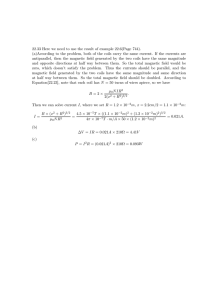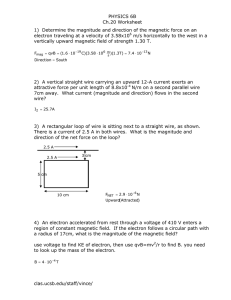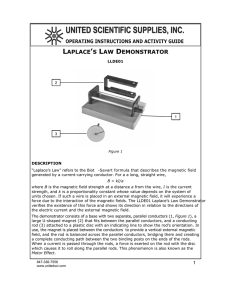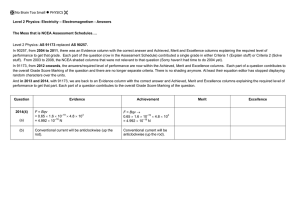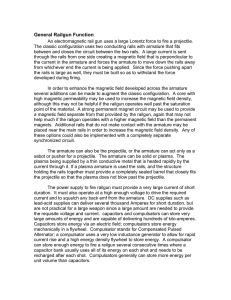solutions
advertisement
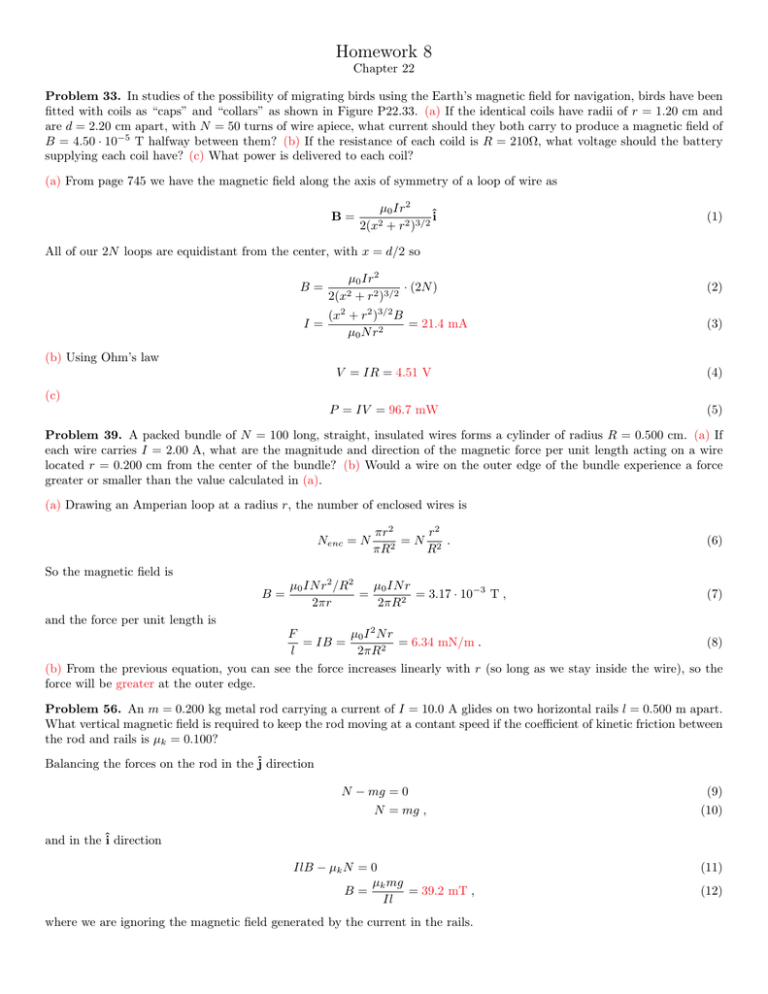
Homework 8 Chapter 22 Problem 33. In studies of the possibility of migrating birds using the Earth’s magnetic field for navigation, birds have been fitted with coils as “caps” and “collars” as shown in Figure P22.33. (a) If the identical coils have radii of r = 1.20 cm and are d = 2.20 cm apart, with N = 50 turns of wire apiece, what current should they both carry to produce a magnetic field of B = 4.50 · 10−5 T halfway between them? (b) If the resistance of each coild is R = 210Ω, what voltage should the battery supplying each coil have? (c) What power is delivered to each coil? (a) From page 745 we have the magnetic field along the axis of symmetry of a loop of wire as B= µ0 Ir2 î 2(x2 + r2 )3/2 (1) All of our 2N loops are equidistant from the center, with x = d/2 so B= µ0 Ir2 · (2N ) 2(x2 + r2 )3/2 (2) I= (x2 + r2 )3/2 B = 21.4 mA µ0 N r2 (3) (b) Using Ohm’s law V = IR = 4.51 V (4) P = IV = 96.7 mW (5) (c) Problem 39. A packed bundle of N = 100 long, straight, insulated wires forms a cylinder of radius R = 0.500 cm. (a) If each wire carries I = 2.00 A, what are the magnitude and direction of the magnetic force per unit length acting on a wire located r = 0.200 cm from the center of the bundle? (b) Would a wire on the outer edge of the bundle experience a force greater or smaller than the value calculated in (a). (a) Drawing an Amperian loop at a radius r, the number of enclosed wires is Nenc = N πr2 r2 = N . πR2 R2 (6) So the magnetic field is B= µ0 IN r2 /R2 µ0 IN r = = 3.17 · 10−3 T , 2πr 2πR2 (7) and the force per unit length is F µ0 I 2 N r = IB = = 6.34 mN/m . (8) l 2πR2 (b) From the previous equation, you can see the force increases linearly with r (so long as we stay inside the wire), so the force will be greater at the outer edge. Problem 56. An m = 0.200 kg metal rod carrying a current of I = 10.0 A glides on two horizontal rails l = 0.500 m apart. What vertical magnetic field is required to keep the rod moving at a contant speed if the coefficient of kinetic friction between the rod and rails is µk = 0.100? Balancing the forces on the rod in the ĵ direction N − mg = 0 N = mg , (9) (10) and in the î direction IlB − µk N = 0 µk mg B= = 39.2 mT , Il where we are ignoring the magnetic field generated by the current in the rails. (11) (12)



